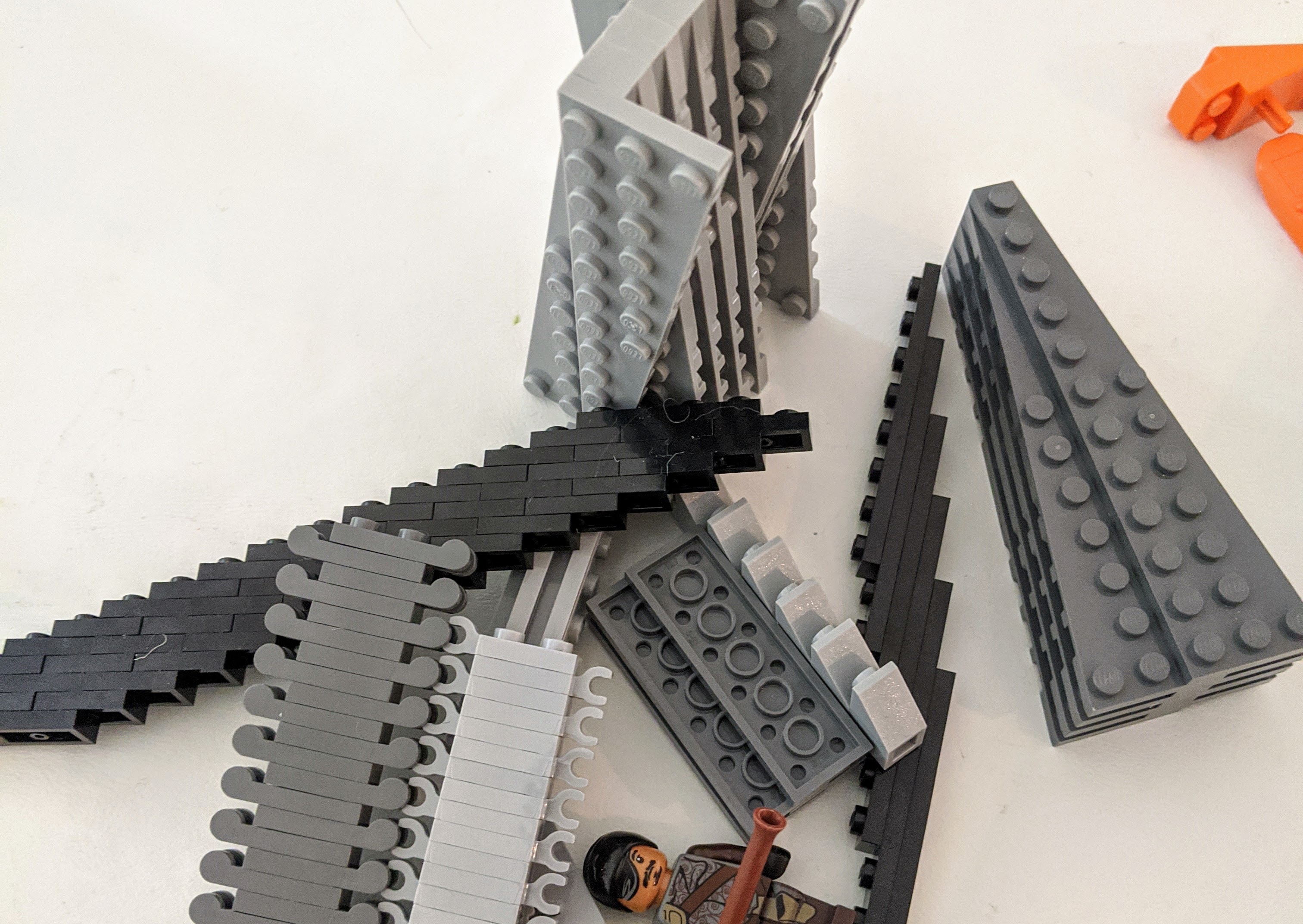
One of my family’s quarantine projects is re-assembling all my daughter’s old Lego sets. The pieces from the sets are in several large storage totes, mixed at random from years of building and taking things apart. As I was digging through a box today looking for some specific piece, I started noticing the system I had started to use.
As I looked for a piece, I would start to collect identical pieces and join them up. Joining pieces allows me later to find those pieces later more efficiently, even if I put them back into the box. It also reduced the number of pieces I would have to sort through to find anything. I do this unconsciously because I have done this ever since I was a kid.

Today I realized that this was a perfect metaphor for paying down technical debt.
Grouping the Legos as you are building means that you take a little bit longer on the sets you make at the beginning, but each successive set gets faster. Not only are there fewer Legos to sort through, but the Legos that are there are becoming more and more organized.
When working in a code base that has accumulated a lot of technical or architectural debt, cleaning things up as you go means that your velocity increases over time. Ignoring technical debt is like adding a few random Legos to the box as you take pieces out. Not only does it not get simpler or faster. It gets slower. Eventually, you have to go to the store to buy a new set because it is just easier than finding the pieces for the old one. Or worse, you have to go to eBay and pay twice as much for the same set because Lego stopped manufacturing it. (I am probably abusing the metaphor here.)
I’ve also been thinking about the difference between building a set by pulling out Legos from a big box versus building a brand-new set.
When you build a new set, the pieces come in smaller bags. Lego numbers the bags, so you only need to open one at a time to find the parts you need. Bigger sets may have multiple instruction books, also ordered by number.
The grouping of Lego pieces into bags is a metaphor for Agile software development.
By narrowing the scope and limiting the options, you make the work go faster, even when the problem is involved (like one of their expert models).
The next time you are trying to explain to your product manager (or anyone) why you need to add more tech-debt stories into the backlog even though it means a feature will take longer to deliver, bring in a big box of Legos as a teaching tool. If it doesn’t work, you’ll at least have a fun team meeting…
Originally published at https://blog.kevingoldsmith.com/2020/06/15/y-a-l-a-m-f-a-t-d-b-p-yet-another-legos-as-metaphor-for-agile-and-technical-debt-blog-post/